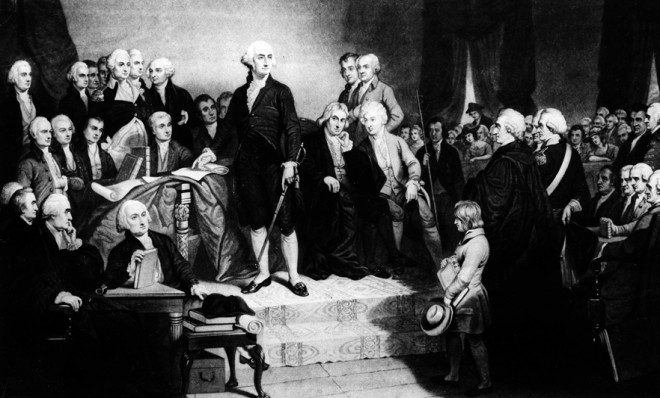10 viral hits (from the 19th century)
Researchers analyzed 1.6 billion words from 41,829 issues of 132 newspapers in the period covering 1830 to 1860. This is what they found.


For as long as there have been means to distribute information widely, there has been the potential for information to go viral. These days, we have easily measurable indexes of virality — pageviews, tweets, shares, and likes, to name a few — but scholars are discovering other ways to quantify virality for the pre-internet era. The Infectious Texts project at Northeastern University aims to foster a clearer understanding of the circulation of ideas in the 19th century by looking at the viral spread of newspaper and magazine texts.
In a recent paper, project leaders David Smith, Ryan Cordell, and Elizabeth Maddock Dillon describe a method for searching through digitized archives of old newspapers to find repeated chunks of text that reveal how the same stories got printed and re-printed. The task is not as easy as it might seem. The algorithms have to filter out ads and other uninteresting repetition, and deal with editorial changes to articles and messy character recognition issues.
An analysis of 1.6 billion words from 41,829 issues of 132 newspapers in the period covering 1830 to 1860 uncovered these top 10 viral hits of the pre-Civil War era.
The Week
Escape your echo chamber. Get the facts behind the news, plus analysis from multiple perspectives.

Sign up for The Week's Free Newsletters
From our morning news briefing to a weekly Good News Newsletter, get the best of The Week delivered directly to your inbox.
From our morning news briefing to a weekly Good News Newsletter, get the best of The Week delivered directly to your inbox.
1. THE INAUGURAL ADDRESS OF PRESIDENT JAMES BUCHANAN
When Buchanan took office in 1857, the speech he delivered had high news value, being delivered at a moment when the country was on the verge of being torn apart over the question of slavery. It certainly didn't make the rounds because it was eloquent or inspiring. He rather ridiculously asserted, "Most happy will it be for the country when the public mind shall be diverted from this question to others of more pressing and practical importance."
2. WASHINGTON'S FAREWELL ADDRESS
Though Washington's Farewell Address was very old news in the period covered by the study, excerpts from it, especially ones highlighting the importance of national unity, were quoted in various articles with various agendas in the years leading up to the Civil War.
A free daily email with the biggest news stories of the day – and the best features from TheWeek.com
3. A RECIPE FOR MAKING STARCH WITH GUM ARABIC
Lest you think the viral hits of the good old days only concerned themselves with politics and inspiring historical references, helpful how-to tips also got around. A popular recipe for making starch with gum Arabic explained how you too could "get that fine gloss" on your linen and muslin.
4. "A BEAUTIFUL REFLECTION"
There was also an appetite for treacly meditations on the meaning of it all. This essay by Edward Bulwer-Lytton (known as the coiner of "it was a dark and stormy night") asks, "Why is it that the rainbow and clouds come over us with a beauty that is not of earth, and then pass off and leave us to muse on their faded loveliness?"
5. QUEEN VICTORIA'S TELEGRAPH MESSAGE TO PRESIDENT BUCHANAN, TRANSMITTED ON COMPLETION OF THE ATLANTIC CABLE
The 1858 transmission of the first transcontinental telegram was a historical technological achievement. Reading the message that had zipped across the ocean was a way for the public to experience and feel part of a history-making moment. It was reprinted frequently, partly because an initial error had cut off half the message, so it was printed a second time in full in later editions, and partly because articles reporting on celebrations of the achievement printed the message yet again. The cable only worked for a few weeks.
6. PRESIDENT BUCHANAN'S 1860 STATE OF THE UNION ADDRESS
This speech had something in it to make everyone mad. In it, Buchanan criticized the North for stirring up trouble on the issue of slavery and proposed an amendment to the Constitution guaranteeing the right to own slaves. He told the South that secession was unjustified, but presented no plan (besides the ultimately failed amendment) for heading off secession.
7. THE TREATY OF GUADALUPE-HIDALGO
This 1848 treaty between Mexico and the U.S. ended the war between the two countries. The U.S. paid $15 million in damages to Mexico and gained a large chunk of the West, from Texas to California.
8. THE "SOLDIER'S BILL"
This bill, passed by Congress in 1850, guaranteed pension rights to soldiers and their widows.
9. A REPORT ON THE DEFEAT OF THE AUSTRIAN ARMY IN THE BATTLE OF MONTEBELLO
It was a blow for the Austrian Empire in 1859 when France helped the Sardinians defeat the Austrian army during the Second Italian War for Independence. One report on it was used multiple times in U.S. newspapers.
10. "HOUSEHOLD ECONOMY"
Who doesn't have an opinion on how kids should be raised and what they should be exposed to? Grand statements on these matters have always been popular with readers. If they promote the publication responsible for delivering the message, then all the better. According to the researchers this was "a story proclaiming the educational and moral value to children of reading newspapers in the home."
Arika Okrent is editor-at-large at TheWeek.com and a frequent contributor to Mental Floss. She is the author of In the Land of Invented Languages, a history of the attempt to build a better language. She holds a doctorate in linguistics and a first-level certification in Klingon. Follow her on Twitter.



